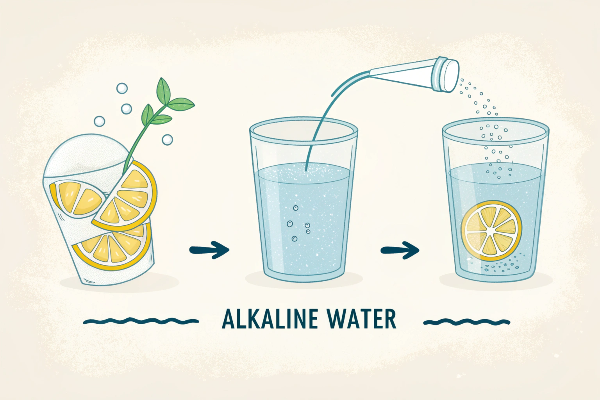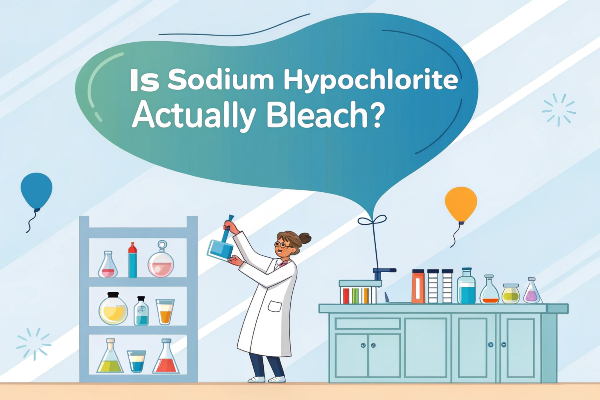Are you facing challenges with material selection, unsure about combining copper and titanium? This common problem impacts industries from electronics to medical devices.
Titanium copper, often discussed as a potential alloy or composite, offers unique properties. Combining copper’s conductivity with titanium’s strength and corrosion resistance sounds ideal, but it’s complex.

But don’t worry, we’ll explore all angles of this topic. Let’s move on to some specific questions that I always heared.
Can You Plate Copper with Titanium?
Struggling with traditional plating methods that fail to combine these dissimilar metals? This frustration is typical in industries requiring enhanced material properties.
It’s tricky; you can’t use standard electroplating. You need special methods like vacuum deposition1 or sputtering2 for a thin titanium layer on copper, suitable for high-end electronics or medical devices.

Diving Deeper into Titanium Plating on Copper
The desire to combine copper and titanium often stems from a need for enhanced performance characteristics, like improved corrosion resistance or better conductivity in specific applications. However, the direct plating of titanium onto copper presents significant challenges, primarily due to the electrochemical differences3 between the two metals. Traditional electroplating, a common method for applying metal coatings, is ineffective for titanium on copper due to titanium’s strong affinity for oxygen and its tendency to form a passive oxide layer that prevents proper adhesion.
Here’s a breakdown of approaches and considerations:
| Method | Description | Pros | Cons |
|---|---|---|---|
| Vacuum Deposition | Titanium is vaporized in a vacuum and deposited onto the copper substrate. | Excellent adhesion, precise thickness control, pure coating. | High cost, complex equipment, slower deposition rate. |
| Sputtering | Titanium atoms are ejected from a target and deposited onto the copper. | Good adhesion, can coat complex shapes, denser coating. | High cost, requires specialized equipment, potential for target contamination. |
| Alternative: Pre-plating | Applying an intermediate layer (like nickel) before titanium deposition. | Can improve adhesion between copper and titanium. | Adds complexity to the process, potential for intermetallic compound formation. |
| Alternative: Cladding | Bonding sheets of copper and titanium using high pressure and temperature. | Creates a robust bimetallic sheet that can be formed, bent, or stamped into components. | High cost, Not suit for all shape, Potential issues with galvanic corrosion at the interface if not properly sealed. |
Consider the practicality and economic implications. If the specific benefits of a titanium-copper combination are not crucial, exploring alternatives like titanium alloy coatings or composite materials that incorporate pre-plated titanium might be more viable.
Is Copper Titanium Alloy Safe?
Worried about the safety of materials in food contact, medical implants, or daily necessities? It’s a valid concern when considering biocompatibility4 and chemical toxicity5.
Copper-titanium alloys are generally considered safe, often meeting standards like ISO 10993. However, check for impurities like nickel and chromium. Always opt for medical-grade alloys6 and look for FDA or EU REACH certifications.

Diving Deeper into the Safety of Copper Titanium Alloys
Safety, especially in applications involving direct contact with the human body or consumables, is paramount. Copper-titanium alloys have gained attention in medical and food-related industries due to their potential biocompatibility and mechanical properties.
Here’s a more detailed breakdown of the safety aspects:
| Aspect | Details | Considerations |
|---|---|---|
| Biocompatibility | Generally good, with titanium contributing to the alloy’s inertness and resistance to corrosion in biological environments. | Ensure the alloy meets relevant standards (e.g., ISO 10993 for medical devices). |
| Chemical Toxicity | Low risk, provided the alloy composition is controlled and free from harmful impurities. | Be aware of potential allergens like nickel (sometimes present in small amounts). |
| Regulatory Compliance | Essential for medical and food-contact applications. | Look for certifications like FDA approval (for medical devices in the US) or compliance with EU REACH regulations (for chemical safety in Europe). |
| Testing Agencies | Reputable organizations that conduct testing and certification for material safety. | Examples include ASTM International, FDA, and notified bodies for CE marking in Europe. |
| Material Grade | Choosing medical-grade or food-grade alloys is crucial. | These grades have stricter controls on composition and manufacturing processes to ensure safety. |
| Long-Term Effects | While short-term safety is generally well-established, long-term effects in specific applications may require further investigation. | Consider the specific use case and potential for prolonged exposure or wear. |
I had a personal experience in choosing a watch. The matrial is safe, but the buckle is not! Choose carefully!
Does Titanium Rust?
Concerned about the durability of titanium in harsh environments? Wondering if it’s suitable for your outdoor or industrial equipment?
Titanium doesn’t rust like iron. It forms a protective titanium oxide (TiO₂) layer, self-healing and preventing further corrosion. It’s excellent for seawater desalination and chemical pipelines.

Diving Deeper into Titanium’s Corrosion Resistance
Titanium’s remarkable resistance to corrosion is one of its most valuable properties, making it highly sought after in various demanding applications. The term "rust" typically refers to the iron oxide formation on iron and steel alloys. Titanium, however, does not contain iron and therefore does not rust in the traditional sense.
Here’s a more in-depth look:
| Aspect | Details | Considerations |
|---|---|---|
| Oxide Layer Formation | Titanium reacts with oxygen to form a thin, tenacious, and self-healing layer of titanium dioxide (TiO₂). | This layer is chemically inert and prevents further reaction with the environment, effectively protecting the underlying metal. |
| Self-Healing Property | If the oxide layer is scratched or damaged, it immediately reforms in the presence of oxygen or moisture. | This provides continuous protection, unlike coatings that can fail if breached. |
| Corrosion Resistance | Exceptional resistance to a wide range of corrosive environments, including seawater, chlorine, and many acids and alkalis. | Makes it suitable for marine applications, chemical processing, and other harsh conditions. |
| Comparison to Rust | Rust (iron oxide) is porous and flaky, allowing corrosion to continue beneath the surface. TiO₂ is dense and adherent, preventing further corrosion. | This fundamental difference explains why titanium is so much more durable in corrosive environments than iron-based alloys. |
| Applications | Widely used in seawater desalination plants, chemical processing equipment, offshore oil and gas platforms, and aerospace components. | These applications demonstrate titanium’s ability to withstand prolonged exposure to highly corrosive substances. |
My neighbor used it in his chemical factory, and the titanium pipelines were intact, but the supporting steel frames were heavily corroded.
What are the Disadvantages of Titanium Metal?
Considering titanium for a project but worried about cost? Need to weigh the pros and cons, especially in budget-conscious applications?
Titanium’s main drawbacks are its high cost (5-10 times more than steel), processing difficulty (requiring inert gas welding), and lower thermal conductivity. Consider stainless steel or aluminum alloys as alternatives.

Diving Deeper into the Disadvantages of Titanium
While titanium offers exceptional properties, it’s essential to acknowledge its limitations to make informed material selection decisions.
Here’s a detailed breakdown:
| Disadvantage | Details | Considerations/Alternatives |
|---|---|---|
| High Cost7 | Titanium is significantly more expensive than common alternatives like steel and aluminum. | Consider the overall cost-benefit ratio. In some cases, the long-term durability of titanium may offset the initial higher cost. |
| Processing Difficulty8 | Titanium requires specialized techniques for machining, welding, and forming due to its reactivity with oxygen and nitrogen at high temperatures. | Inert gas shielding (e.g., argon) is often necessary during welding to prevent embrittlement. |
| Low Thermal Conductivity9 | Titanium is a poor conductor of heat compared to metals like copper and aluminum. | This can be a disadvantage in applications requiring rapid heat dissipation. |
| Gall Resistance | Poor galling resistance. | Use hard surface treatments such as nitriding. |
| Alternatives | Stainless steel (for corrosion resistance), aluminum alloys (for lightweight applications), and copper alloys (for high thermal conductivity). | Choose the alternative that best matches the specific requirements of your application. |
I used it for bike frame. The high strength and light weight are amazing, but it is too expensive.
Can You Weld Titanium to Copper?
Planning to join titanium and copper for heat sinks or electronic packaging? Concerned about thermal expansion differences and joint strength?
Direct welding is challenging due to different melting points and brittle intermetallic compound formation. Consider explosive welding, transition layers (tantalum/nickel), or mechanical connections (bolts/rivets).

Diving Deeper into Welding Titanium to Copper
Joining dissimilar metals like titanium and copper presents significant metallurgical challenges. Direct fusion welding (like TIG or MIG welding) is generally not recommended due to the vast differences in their physical and chemical properties.
Here’s a more comprehensive look:
| Challenge | Details | Mitigation Strategies |
|---|---|---|
| Melting Point Difference | Titanium has a much higher melting point (1668°C) than copper (1085°C). This makes it difficult to achieve proper fusion without either melting the copper excessively or not melting the titanium enough. | Precise control of heat input is crucial, but often insufficient for direct welding. |
| Intermetallic Compound Formation10 | Titanium and copper readily react at high temperatures to form brittle intermetallic compounds (e.g., TiCu, Ti₂Cu) that weaken the joint. | Using a transition layer or explosive welding can minimize the formation of these compounds. |
| Thermal Expansion Mismatch11 | Titanium and copper have different coefficients of thermal expansion. This can lead to residual stresses and cracking during cooling after welding. | A transition layer with an intermediate coefficient of thermal expansion can help to mitigate this issue. |
| Alternative Joining Methods12 | Explosive welding: A solid-state welding process that uses controlled detonations to create a metallurgical bond. | Transition layer welding: Using an intermediate layer of a compatible metal (e.g., tantalum, nickel, or vanadium) to facilitate bonding. |
| Alternative Joining Methods(Cont.) | Brazing: using a filler metal with a lower melting point than either titanium or copper. | Mechanical fastening: Using bolts, rivets, or other mechanical fasteners to join the components. This avoids the metallurgical challenges of welding altogether. |
I ever tried a combination connector of titanium and copper, it is made by the explosive welding, but it is too expensive.
Conclusion
Titanium copper offers exciting possibilities, but also technical hurdles. Carefully weigh the pros, cons, and alternatives to make the best material choice for your specific needs!
-
Explore this link to understand the vacuum deposition process, its benefits, and applications in titanium plating, crucial for high-tech industries. ↩
-
Learn about sputtering, a key method for titanium plating, its advantages, and how it compares to other techniques in this informative resource. ↩
-
Understanding the electrochemical differences is vital for successful plating; this resource provides in-depth insights into these challenges. ↩
-
Biocompatibility is key in selecting materials for medical and food applications. Discover its significance and implications for safety. ↩
-
Chemical toxicity can impact health and safety. Learn more about its effects and how to choose safe materials for various applications. ↩
-
Understanding medical-grade alloys is crucial for ensuring safety in medical applications. Explore this link to learn more about their standards and certifications. ↩
-
Understanding the cost factors of titanium can help you make informed decisions for your project. ↩
-
Exploring processing challenges can guide you in selecting the right techniques for your titanium projects. ↩
-
Learning about thermal conductivity differences can help you choose the right material for heat-sensitive applications. ↩
-
Understanding intermetallic compounds can help you avoid brittle joints in welding titanium to copper. Explore this resource for detailed insights. ↩
-
Learn about the impact of thermal expansion mismatch on welding processes to improve your techniques and outcomes. ↩
-
Discover various methods beyond traditional welding that can effectively join titanium and copper, enhancing your project options. ↩





